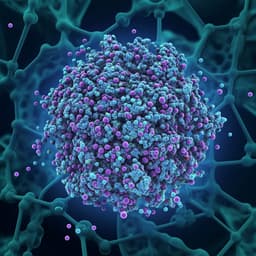
Physics
Direct visualization of viscous dissipation and wetting ridge geometry on lubricant-infused surfaces
A. Naga, M. Rennick, et al.
This groundbreaking research by Abhinav Naga, Michael Rennick, Lukas Hauer, William S. Y. Wong, Azadeh Sharifi-Aghili, Doris Vollmer, and Halim Kusumaatmaja unveils the unique dynamics of drops on lubricant-infused surfaces, revealing how wetting ridge height alters with speed. Discover insights on energy dissipation and the minimal impact of surface geometry.
Playback language: English
Related Publications
Explore these studies to deepen your understanding of the subject.







